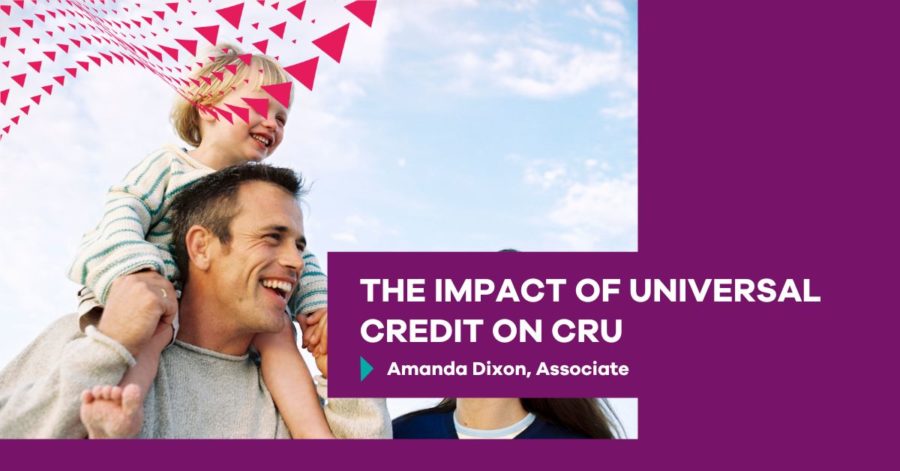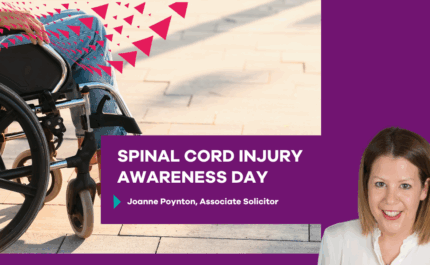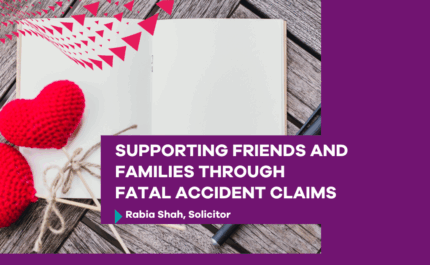
The CRU (Compensation Recovery Unit) was developed from the Social Security (Recover of Benefits) Act, 1997. It was developed to ensure that the defendant reimburses the state for any benefits which were paid because of an accident and to allow for those benefits to be offset to a sum paid to the claimant to avoid double recovery.
A compensator who makes a payment is liable to the DWP for the total amount of recoverable benefits.
“Recoverable benefits” are those which are paid during the “relevant period” and “in respect of” the accident.
The “relevant period” is either when the claim is finally settled, or disposed, or a maximum of five years from the accident.
Universal Credit (UC) has replaced:
- Child tax credit
- Housing benefit
- Income support
- Income-based job seekers allowance
- Income-related employment support allowance
- Working tax credit
Two of these benefits, child tax credit and housing benefit, were not previously recoverable under the 1997 Act. However, as UC is not broken down, and all benefits are now rolled into one monthly payment, they can now be recovered.
UC is off-settable against compensation for earnings lost during the relevant period which is up to fives years from date of accident. This does not include a Smith v Manchester awards or future loss of earnings but can include lost pension contributions.
For most claimants, if they are receiving benefits, they will be receiving UC. This is controversial because CRU certificates have increased significantly since the introduction of UC and can often be in the tens of thousands. The benefits payable cannot be separated out and the whole amount is off-settable.
This has an impact on whether a claim can be settled or not. If, for example, causation is denied or there are arguments over the claimant’s ability to return to work, defendants may have made a low offer of settlement. Defendants may be unwilling to make such an offer if the CRU certificate is significant.
It is a problem for both parties. A claimant may have made an application for housing benefit before their accident, but it was then rolled into UC and becomes off-settable against the past financial loss claim. Often, if the claimant is part of a couple, the housing benefit for both is stated on the claimant’s CRU certificate.
A challenge to the 1997 Act was brought in the case of: Aviva Insurance Ltd & Another v Sec of State for Work and Pensions (2022) EWCA Civ 15.
Judicial review proceedings were brought alleging that the 1997 Act was incompatible with the Human Rights Act. One of the arguments was in relation to UC. The High Court agreed with the insurers that it interfered with Article 1 of the Human Rights Act. However, this decision was overturned by the Court of Appeal in January 2022. They stated that part of Parliament’s intention in making the 1997 Act was that all state benefits paid to a claimant who has suffered an accident should be recoverable. The burden is therefore shifted from the claimant to the defendant, and this is a legitimate aim. Fair balance factors included the amount to be repaid is limited to five years and claimants will often have benefited from free state care. The decision is not open to challenge.
CRU is hard edged. The 1997 Act states: “(1) A person who makes a compensation payment in any case is liable to pay to the Secretary of State an amount equal to the total amount of the recoverable benefits”. This is what must and does happen. Without a challenge of CRU, all the amounts listed on the certificate must be paid by the defendant. A common reason for a challenge is that causation has not been established and the claim is time delineated.
A CRU certificate can be challenged either by review or appeal
- Review – this can be requested by either party prior to or after the final determination of the claim (although in practice, reviews will not be successful pre-finalisation of the claim unless there has been a mistake in the preparation of the certificate or there is another non-contentious ground).
- Appeal – this can only be made after the claim has been “finally disposed of” and the CRU on the certificate has been paid. The defendant has a mandatory right to appeal. A claimant can only appeal if their compensation was reduced by CRU. A mandatory reconsideration of the certificate by the CRU must be requested within 1 month of the CRU being paid. An appeal must then be made within 1 month of the mandatory review being provided.
The most common ground for appeal is that benefits listed on the certificate have not been paid “in respect” of the accident. It is not known if an appeal against the deduction of all UC has been successful. However, if the accident is a partial cause of payment of benefits throughout the relevant period, then an appeal will not succeed.
It is possible to appeal CRU if the claimant is part of a couple and the certificates lists benefits payable to both. This has been successfully done.
Unless agreed otherwise between the parties, a claimant is entitled to the benefit of a review of an appeal if it results in a repayment by CRU. (Bruce v Genesis Fast Foods, 2003, EWHC 788).
If you have an issue with a CRU certificate and are struggling to know what to do with it then guidance can be found here.



